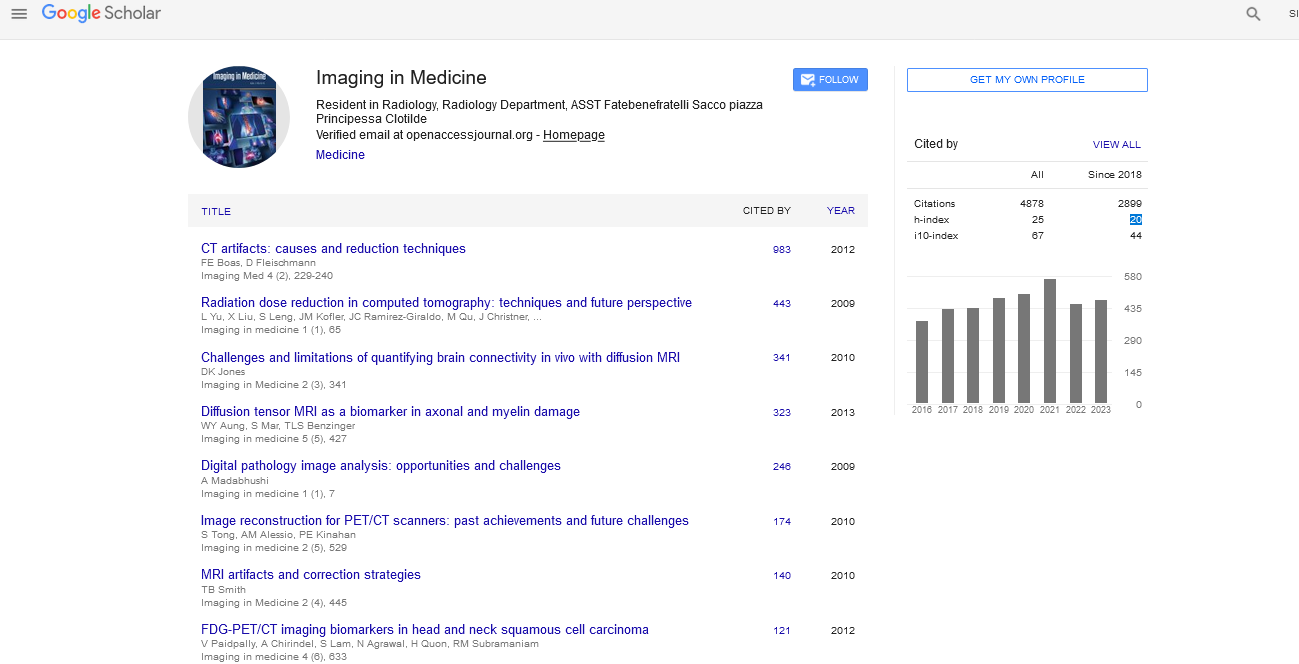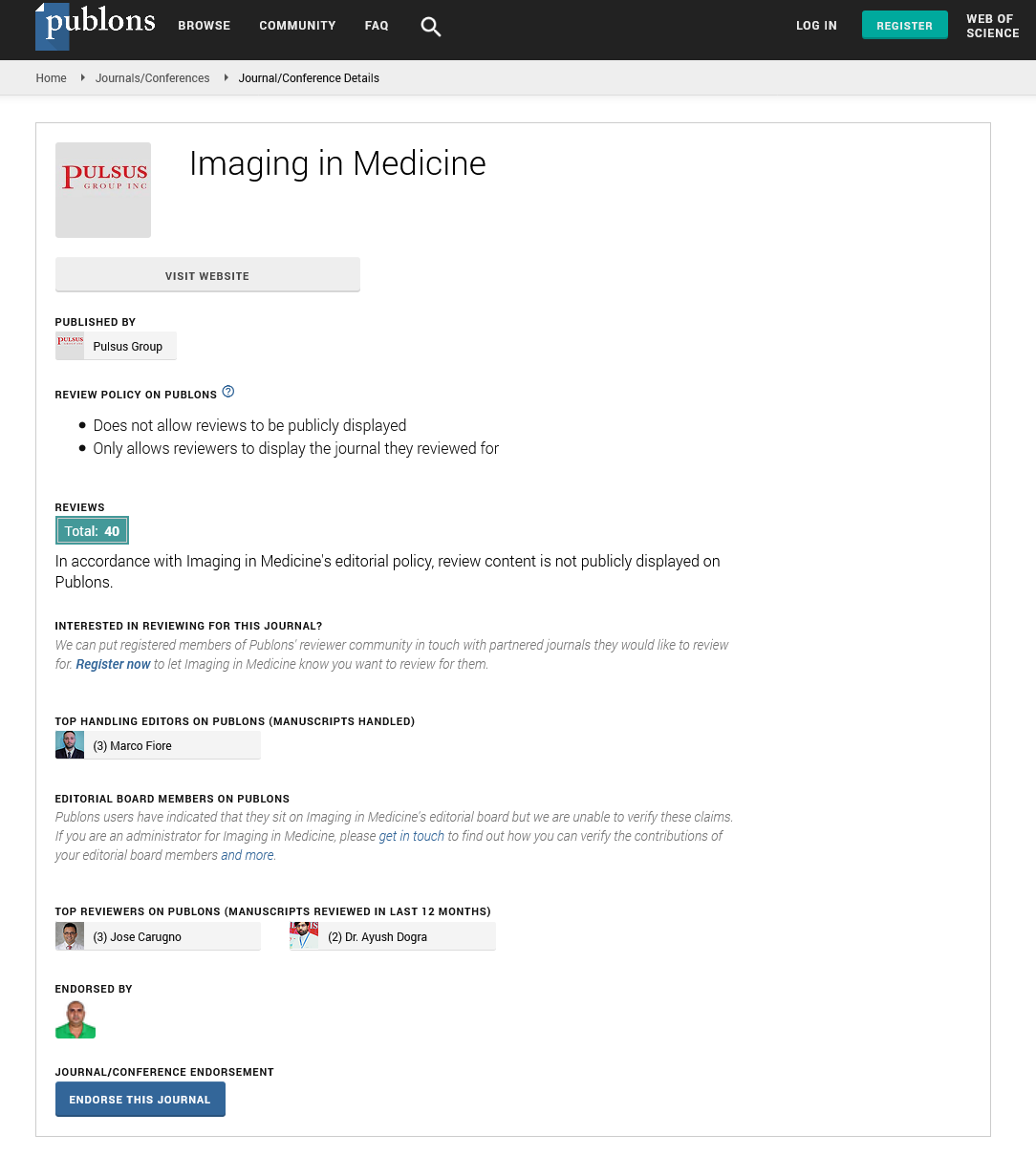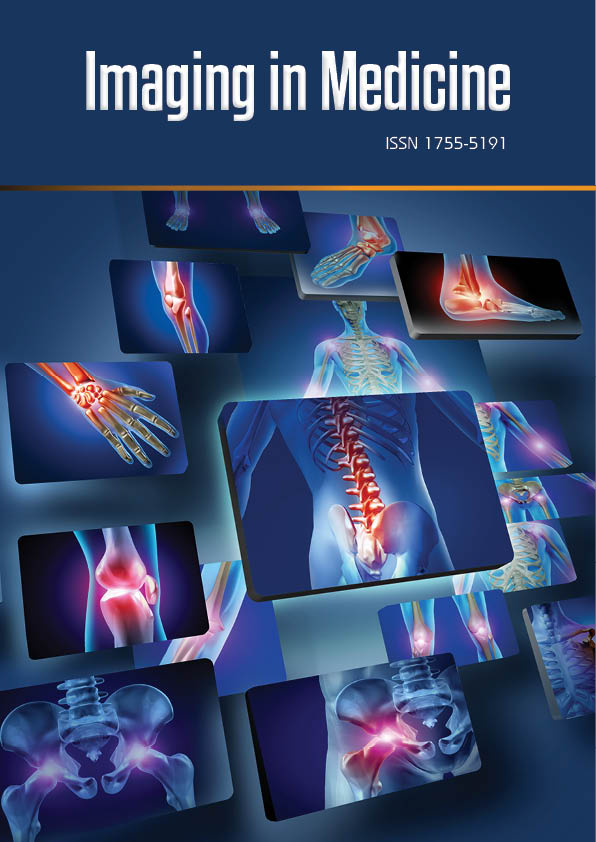Editorial - Imaging in Medicine (2025) Volume 17, Issue 1
Elastography: A Non-Invasive Tool for Assessing Tissue Stiffness
Lokesh Dhanapal*
Department of Biosystems Engineering, University of Manitoba, Canada
- *Corresponding Author:
- Lokesh Dhanapal
Department of Biosystems Engineering, University of Manitoba, Canada
E-mail: lokesh7465@gmail.com
Received: 17-Jan-2024, Manuscript No. fmim- 25-169966; Editor assigned: 20-Jan-2024, PreQC No. fmim-25-169966 (PQ); Reviewed: 04-October-2024, QC No. fmim-25-169966; Revised: 14-Jan-2024, Manuscript No. fmim- 25-169966 (R); Published: 21-Jan-2024, DOI: 10.47532/1755-5191.2025.17(1).1-3
Introduction
Elastography is an advanced medical imaging technique designed to measure the stiffness or elasticity of soft tissues in the body. Since many diseases, such as cancer and liver fibrosis, alter tissue stiffness, elastography provides valuable diagnostic information that traditional imaging methods like ultrasound or MRI alone may not reveal. Non-invasive, safe, and increasingly accessible, elastography has become an important tool in modern diagnostics, guiding both early disease detection and treatment monitoring.
What is Elastography?
Elastography builds on the principle that healthy and diseased tissues differ in elasticity. While healthy tissues tend to be softer and more flexible, diseased tissues often become stiffer. By applying mechanical or acoustic stress to tissues and measuring how they deform, elastography generates maps—called elastograms—that show tissue stiffness in color-coded images. This enables clinicians to pinpoint areas of abnormality with greater accuracy than conventional imaging.
Types of Elastography
Several forms of elastography are now in clinical use, each with its own advantages:
Ultrasound Elastography: Uses sound waves to measure tissue displacement. Variants include transient elastography (commonly used for liver fibrosis assessment) and shear wave elastography.
Magnetic Resonance Elastography (MRE): Combines MRI technology with low-frequency vibrations to create detailed 3D maps of tissue stiffness, providing high accuracy in organs such as the liver and brain.
Strain Elastography: Measures tissue deformation caused by manual compression or natural physiological movement. It is often applied in breast and thyroid imaging.
Clinical Applications
Elastography has gained traction in several key areas of medicine:
Liver Disease: The most widespread use of elastography is in assessing liver fibrosis and cirrhosis. It provides a safer alternative to liver biopsy for monitoring chronic hepatitis or alcohol-related liver disease.
Oncology: Tumors are often stiffer than surrounding tissues. Elastography assists in detecting and characterizing breast, thyroid, and prostate cancers, and helps differentiate benign from malignant lesions.
Cardiology: Emerging applications include measuring myocardial stiffness, which can provide insights into heart failure and other cardiac conditions.
Neurology: MRE is being explored for studying brain stiffness, which may correlate with conditions such as Alzheimer’s disease or multiple sclerosis.
Musculoskeletal Disorders: Elastography is used to evaluate tendons, muscles, and joints, supporting diagnosis of injuries and degenerative conditions.
Advantages of Elastography
The rise of elastography in clinical practice is due to its many benefits:
Non-Invasive: Unlike biopsies, elastography requires no surgical intervention, reducing risks and discomfort.
Early Detection: Changes in tissue stiffness often occur before structural changes, allowing earlier diagnosis.
Reproducibility: Elastography provides quantitative, repeatable measurements, making it useful for long-term monitoring of disease progression.
Patient-Friendly: The procedure is quick, painless, and does not involve radiation exposure.
Cost-Effective: Especially in liver disease, elastography reduces the need for costly and invasive biopsies.
Limitations and Challenges
Despite its promise, elastography has limitations:
Operator Dependency: Some techniques require skill and experience to ensure reliable results.
Variability: Factors such as body habitus, obesity, or inflammation can affect measurement accuracy.
Limited Availability: Advanced techniques like MRE are not yet widely available in all healthcare settings.
Learning Curve: Clinicians need training to interpret elastograms accurately, especially in complex cases.
The Future of Elastography
Elastography continues to evolve with advances in imaging technology. AI-powered interpretation tools are improving accuracy and reducing operator dependency. Integration with portable ultrasound devices is making elastography more accessible, even in resource-limited settings. Researchers are also exploring its use in personalized medicine, where tissue stiffness measurements could help tailor treatment strategies for individual patients. As applications expand beyond liver and oncology to cardiology, neurology, and beyond, elastography is poised to become an essential diagnostic tool across multiple specialties.
Conclusion
Elastography has emerged as a transformative imaging technique by providing a non-invasive, reliable, and patient-friendly method for assessing tissue stiffness. From liver fibrosis to cancer detection, its ability to reveal functional information that traditional imaging cannot has made it an invaluable tool in modern healthcare. While challenges remain in terms of availability and standardization, technological innovations are rapidly overcoming these barriers. As elastography becomes more widespread, it will continue to enhance early diagnosis, guide treatment, and improve patient outcomes.
References
- Kristina M, Pandiangana D, Febby E (2017) Deskripsi jenis-jenis kontaminan dari kultur kalus Catharanthus roseus (L) G. Donnaman. Jurnal MIPA UNSRAT 6: 47-52.
- Ho P, Azadi H (2010) Rangeland degradation in North China: Perceptions of pastoralists. Environmental Research 110: 302-307.
- Denbela H, Yidinachachew T, Ayele F (2017) Assessment on Feed Resource, Feed Production Constraints and Opportunities in Salamago Woreda in South Omo Zone, in South Western Ethiopia. Academic Journal of Nutrition 6: 34-42.
- Bo TL, Fu LT, Zheng XJ (2013) Modeling the impact of overgrazing on evolution process of grassland desertification. Aeolian Res 9: 183â189.
- Peters DPC, Bestelmeyer BT, Havstad KM, Rango A, Archer SR, et al. (2013) Desertification of rangelands. Clim Vulner 4: 230â259.
PubMed, Google Scholar, CrossRef


